All about actinidia argut
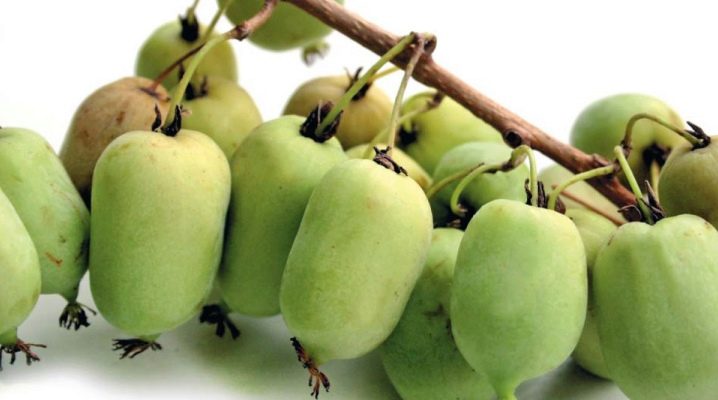
For those who want to decorate their site with a beautiful plant, which also gives unusual fruits, you can advise the actinidia argut. It is little known, but it has a huge number of fans who value it not only for its decorative qualities, but also for its yield.
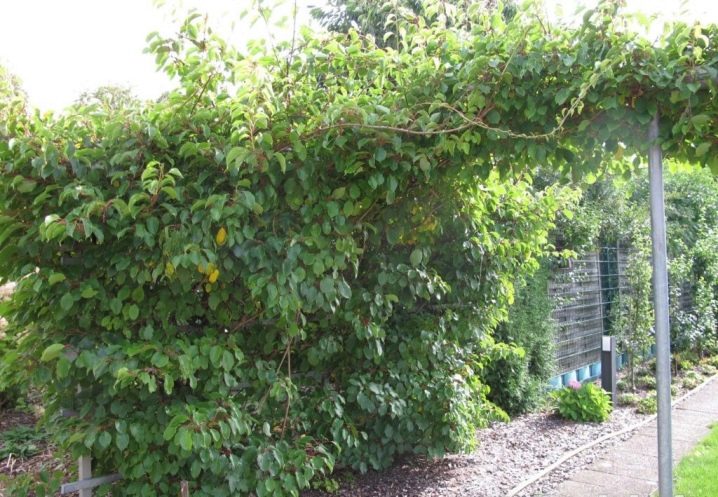
Description of the plant
Actinidia arguta is one of the tallest representatives of the genus Actinidia. This is a perennial liana, the annual growth of which reaches 2-3 m, and the length of the shoots is up to 7 m. Wild varieties grow three times as long. It is a perennial vine that is capable of producing sweet fruits with a wonderful aroma. To understand what they taste like, you can imagine kiwi - after all, this is also a representative of this genus. Actinidia arguta is often confused with another variety - kolomikta. They differ in the shape and color of the leaves, in actinidia argut they are elongated (therefore it is called acute) and green.
Growers should pay attention to it for several reasons at once:
- the possibility of using it to decorate the site;
- rapid growth (in two years, this vine can tightly cover the gazebo, and dense foliage will protect both from the sun and rain);
- ease of reproduction;
- harvesting berries of unusual taste, which can be eaten fresh and harvested for the winter;
- availability of varieties with different characteristics.
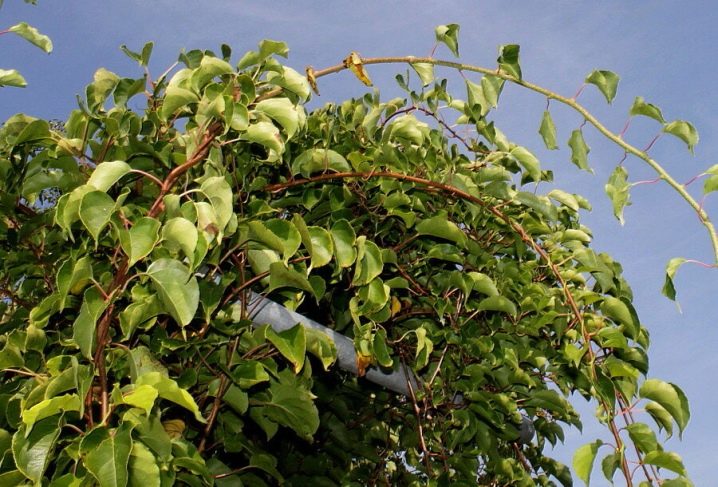
Varieties
Now you can buy seeds and seedlings of varieties adapted to different conditions: both for the southern regions of Russia, and for the middle zone and the Moscow region. Of course, when choosing seedlings, you need to evaluate several characteristics and choose the optimal ones.
-
"Purple Garden" - a powerful liana, high-yielding and winter-hardy.
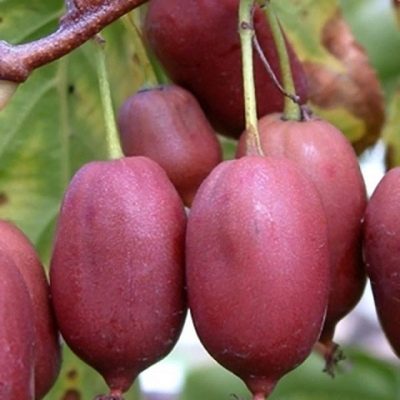
-
"Relay race" - just like the previous one, it is suitable for northern regions. Its distinctive feature is sweet and sour fruits with apple and pineapple flavors.

-
"Golden braid" - late variety, one of the most cold-resistant, with medium-sized fruits and apple flavor.
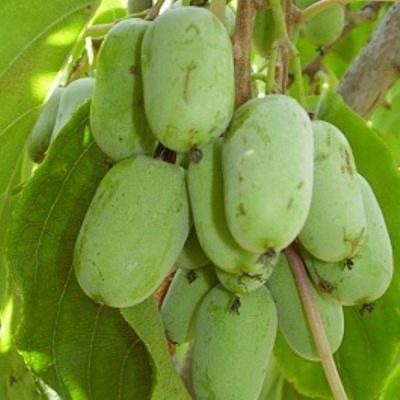
-
"Kiev large-fruited" - a hybrid variety of actinidia with very large sweet berries - up to 20 g.

-
"Native" - another variety with large, sugary fruits that have a strawberry aroma. Late ripening.
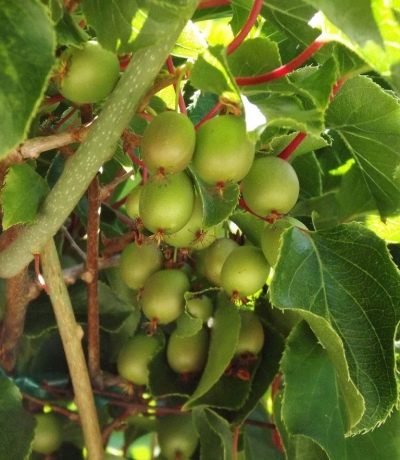
-
"Bingo" - fruitful actinidia, the fruits of which have an unusually beautiful pink hue.
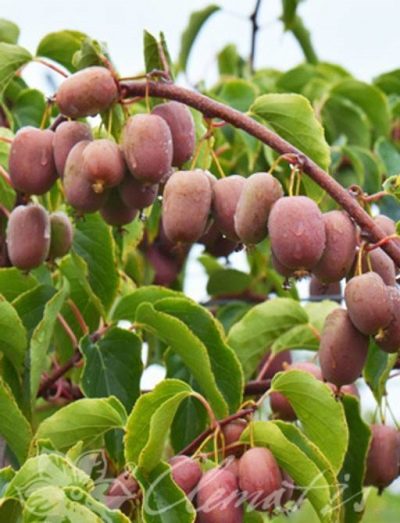
-
"Balsamic" - liana, intended for cultivation throughout Russia, berries with a weak coniferous aroma.

-
"Lucy" - a variety with a strong ovary that does not crumble, and fruits of medium size, classic shape and with a pleasant taste.
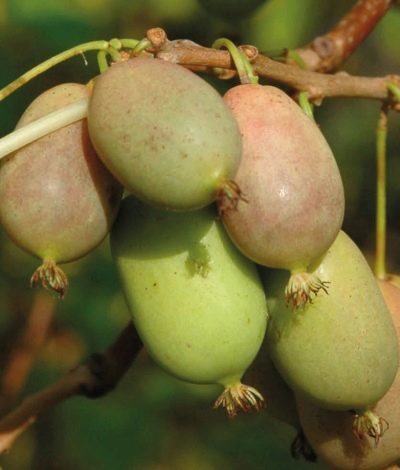
-
"Giantess" - a well-known tall variety with a medium ripening period and high yield.
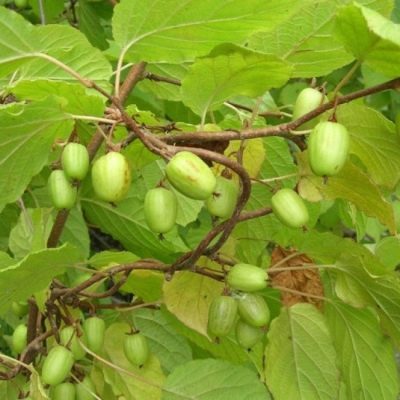
-
"Hybrid Sausage" - actinidia up to 7 m in height, with red-green fruits.
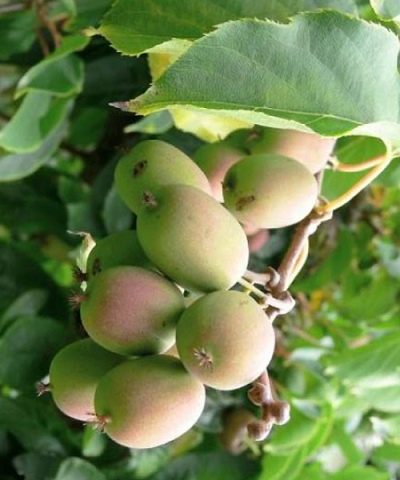
- "Ribbed" - medium-sized liana with cylindrical berries and pineapple flavor.
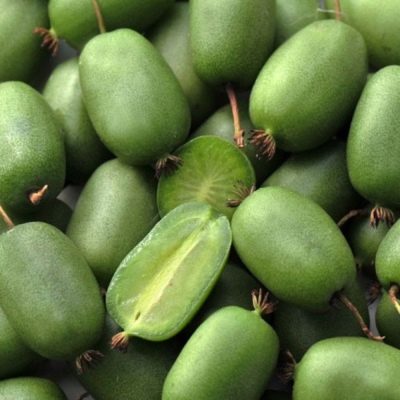
For female vines, pollinators are needed, and some of them are recommended for specific varieties. For example, Bayern Kiwi and Wakey are suitable for Purple Garden. And "Mail" is declared as a male pollinator for all varieties of actinidia arguta. There are self-fertile varieties that practically do not differ in yield from pollinated ones.

Landing
Before deciding to buy and plant actinidia, it is important to prepare optimal conditions in which the vine will feel good and give high growth. To properly plan the site, you can consult a landscape designer.
Location
Ideally, actinidia arguta should grow in the same conditions in which it grows in the wild. Its features allow it to grow in partial shade - from trees or other objects. However, for flowering and fruit growth, it is necessary that there be sun in this part of the site for at least a few hours.
One of the planting options is in which the seedling will be in the shade, and when it grows up, it will be in the sun.
Since we are talking about a liana, it can be planted along the fence, walls of houses, next to a gazebo or any other building, as well as in another place where a support can be installed. It is the decorative properties of actinidia that are valued in landscape design - the close interweaving of vines with dense foliage reliably covers any objects. In summer, it will delight with dense greenery, and in winter, snow falls beautifully on the intertwined branches. In addition, it should be remembered that this vine blooms very beautifully - with a pleasant, sweet aroma.
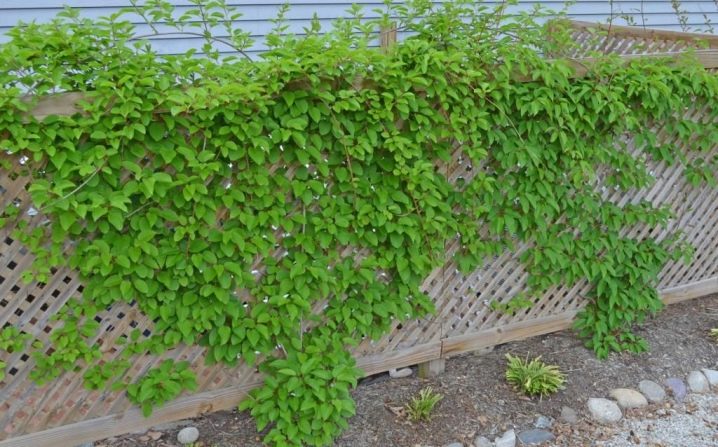
The soil
Actinidia arguta is relatively unpretentious in terms of soil selection. It grows well both on black soil and on less fertile soil - loam and sandstone. However, it is worth remembering that for good growth, the soil must be sufficiently light and loose - only in this case the necessary water and air exchange takes place in it. Clayy, heavy soil retains water, while sandy, on the contrary, gives it up too quickly, and the roots can freeze.
With high acidity, plants will need additional feeding. If the soil has previously been actively planted and has exhausted its supply of nutrients, you can improve its composition by applying fertilizers and processing.
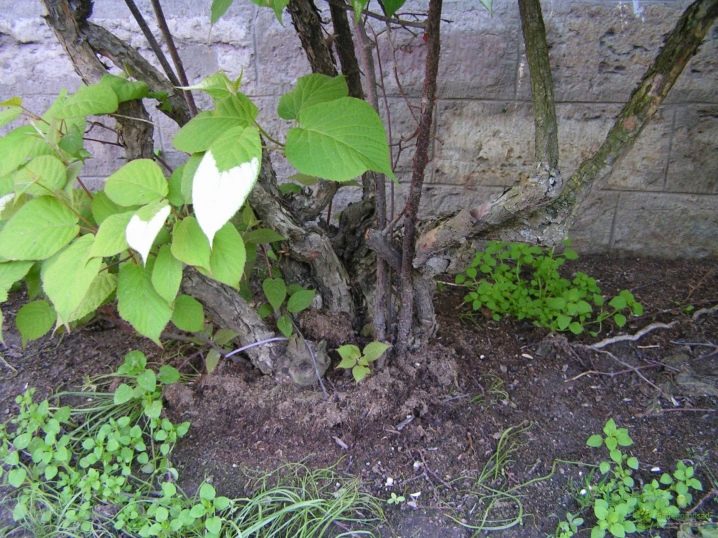
Technology
Before proceeding with planting, it should be borne in mind that actinidia is a bisexual plant. And for 10-15 female seedlings, at least one male should be planted. Container planting is preferable, since in this case the formed root system is not damaged in the seedling, and the plant is easier to transfer to open ground.
How to plant:
- dig a hole one and a half to two bayonets of a shovel and half a meter wide, pour a layer of humus on the bottom;
- we take out the seedling from the container and, without violating the integrity of the earthen coma, put it in the prepared hole;
- we fill up the voids on the sides with good fertile soil and form a depression along the diameter of the hole so that the water does not spread during watering;
- We water the plantings well so that the soil is completely saturated and compacted around the seedlings.
Since this vine branches well, the distance between the pits should not be less than 1.5 m.
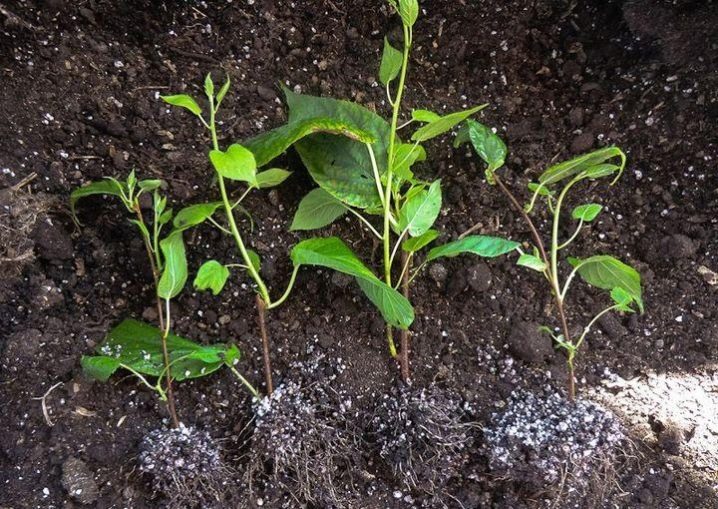
Care
Since we are talking about a liana, the further formation of a beautiful plant with tasty large fruits depends on proper care. To do this, it is necessary to apply various agricultural techniques in a timely manner and annually monitor the state of the plantings.
Watering
Actinidia arguta does not like both too abundant watering and prolonged drought. In hot weather, the plants are watered every day, in cool weather - 2 times a week. At the same time, you can irrigate foliage, but it is better to do this early in the morning or late in the evening, so as not to burn it under the sun. In the fall, watering stops completely.
To avoid water imbalance, it is important to moisturize the soil well during planting and then mulch the soil around the planted plant. To do this, you can use any available material - sawdust, cardboard, spruce branches. Fallen leaves are suitable for mulch, if there is a guarantee that there are no pest larvae in it. This agricultural technique has many advantages, one of which is the preservation of existing moisture in the soil.
Thus, the number of irrigations can be significantly reduced - this is especially convenient if there is no way to regularly care for the plantings. In addition to protecting the soil from drying out, mulch prevents overheating in summer and freezing of actinidia in winter, since its roots are shallow.

Fertilization
Actinidia arguta needs additional feeding during planting, during flowering and fruit setting, as well as in case of deterioration of the condition or illness. The first fertilizers can be applied at planting - for example, superphosphate.
In order not to burn the roots of the plant, it must be mixed with humus or any other soil (in the amount of 1 tablespoon per bucket).
In the summer, any dressing is applied in liquid form during watering. To do this, you can use an infusion of mullein or azophoska (30 g per bucket of water) under each bush. During autumn work, the soil around the trunk must be loosened or shallowly dug up. Then humus is introduced into it with the addition of ammonium nitrate and potassium fertilizer.

Pruning
Since the actinidia arguta grows well, it needs pruning. This is necessary for two reasons:
- to regulate the length of the branches and the density of the bush;
- to stimulate the growth of lateral shoots, on which fruits appear.
Do not feel sorry for the plant and let the growth take its course, since it is inconvenient to collect fruits from tangled and overly long vines. And the perennial thickets do not look very attractive.
In order for the pruning to be as painful as possible for the plant, you need to choose the right time:
- summer pruning takes place in June, during the period of active growth of branches;
- autumn takes place at the end of October, when actinidia has shed its leaves.
To form a bush, the trellises are pulled like for grapes. They are three levels of wire or metal structure. The next year after planting, the three strongest shoots are fixed at the lower level, spreading in different directions, and the rest are removed.
Starting from the age of two, every year, the growing branches are cut off by a third of the length and all excess ones are removed at the base. The main (skeletal) branches are changed every 5-7 years for fresh ones.
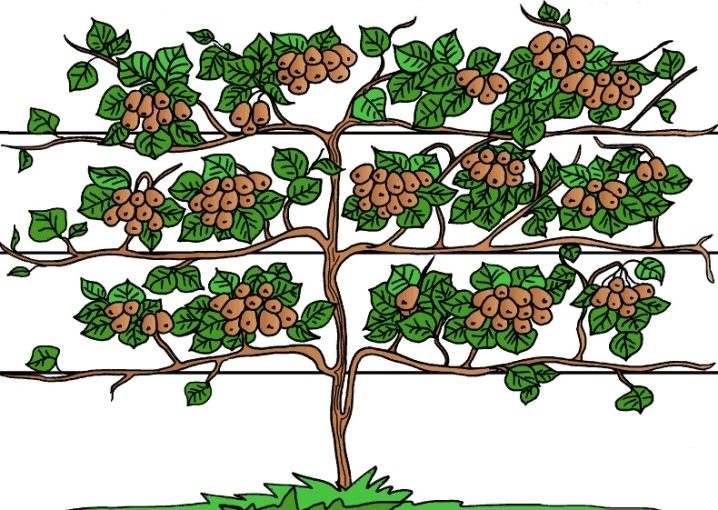
Preparing for winter
Despite the winter hardiness of some varieties, before the onset of cold weather, it is necessary to carry out a number of preparatory measures:
- prune, remove old and diseased branches;
- remove debris and fallen leaves from the site, replace the mulching layer with a new one - it will act as a heater;
- young shoots must be bent and laid on the ground or boxes - this is necessary so that they are less affected by frost and do not break much;
- from the onset of constant frosts and until mid-April, it is better to keep the laid branches covered with non-woven material and a layer of spruce branches.
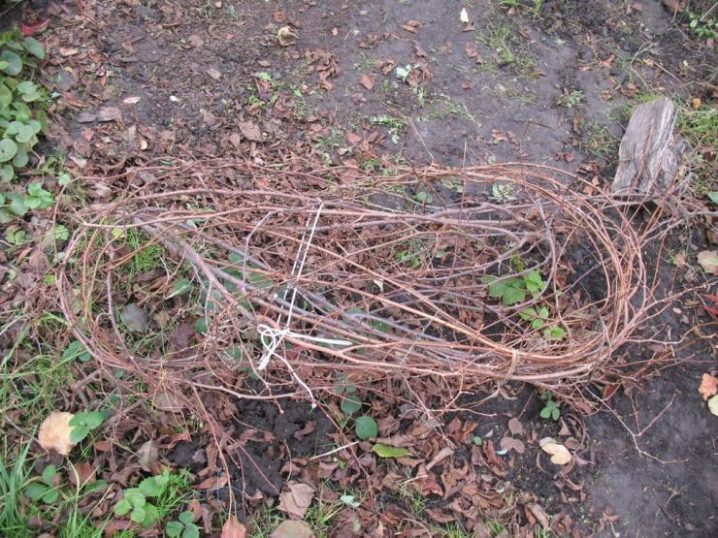
Reproduction
In order to grow actinidia arguta, you can use different planting material.
-
Seeds... This method is considered the longest and most laborious; it is impossible to say in advance which plant will grow - male or female. But from the seeds you can get a healthier vine, which will improve its characteristics - it is not without reason that this option is used by breeders. Sowing begins at the end of January, the soaked seeds are placed in a bag and buried in clean, wet sand. The container with sand is placed in the refrigerator for two months, the seeds are examined and aired every 10 days.
Then, at room temperature, pecking is expected and planted in a mixture of sand, peat and humus in rows every 2 cm.After the appearance of the 4th leaf, the seedlings are dived, planted in a greenhouse in May, and then in open ground, well protecting from animals and bad weather.
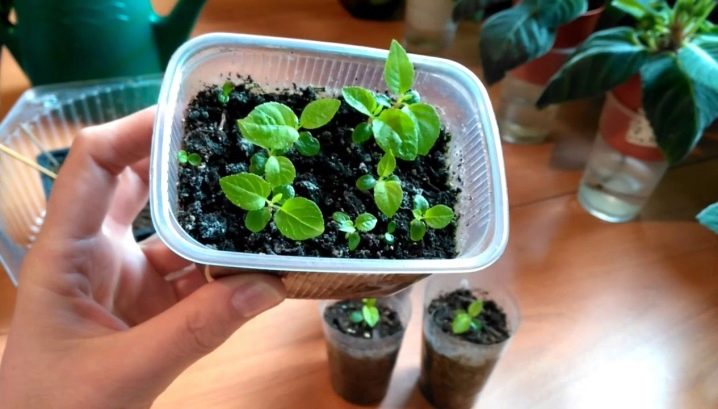
-
Layers... In the spring, one of the strong young shoots bends down to the ground. And then in several places it is fixed and sprinkled with soil - such a number of seedlings will eventually turn out. After the roots appear, the layers can be divided and planted the resulting material in the desired order.
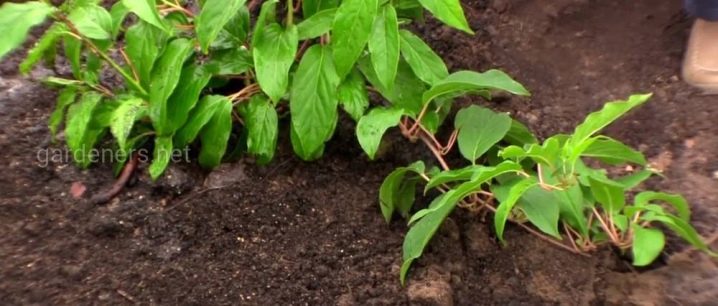
- Cuttings are cut from the shoots of the current year that have begun to brown so that each has 3-4 buds... In this case, all the lower leaves are removed, and the upper one is cut in half. The lower oblique cut must be immediately placed in water with a root growth stimulator for 6 hours. Then they are planted in a greenhouse at an angle to the ground at a distance of 10-15 cm between cuttings and rows.After all the upper leaves have begun to grow, you can begin to gradually open the film. For the winter, plantings are covered with foil and leaves. It is better to transplant two-year-old actinidia to a permanent place.
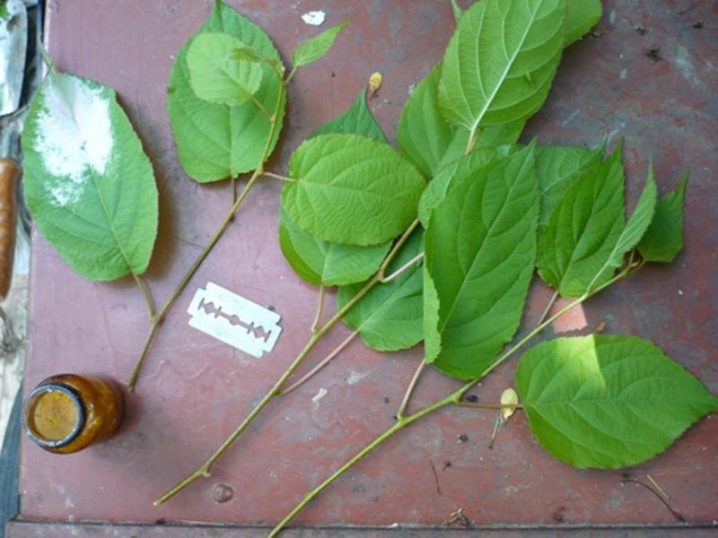
Diseases and pests
Actinidia arguta is considered a hardy plant, but even it can be affected by some diseases:
- fungal (phyllostictosis, powdery mildew);
- infectious (ramulariasis, gray rot).
If a different plaque is noticed on the trunk, branches or leaves, they change color or begin to dry out - this is a reason to turn to the reference book and start treatment. To prevent this from happening, you can periodically carry out prophylaxis with the help of fungicides or immunostimulants.
Oddly enough, the main enemies of actinidia, especially young seedlings, are cats. Young green twigs attract them with their taste. Any device can be used to protect actinidia from pets. Experienced growers put on hoses cut along the green shoots or wrap the plantings with a fixed net - it restricts access, but does not impede sunlight. After the shoots are covered with bark, cats lose interest in them and do not harm the plant.
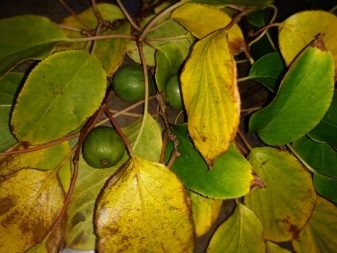












The comment was sent successfully.